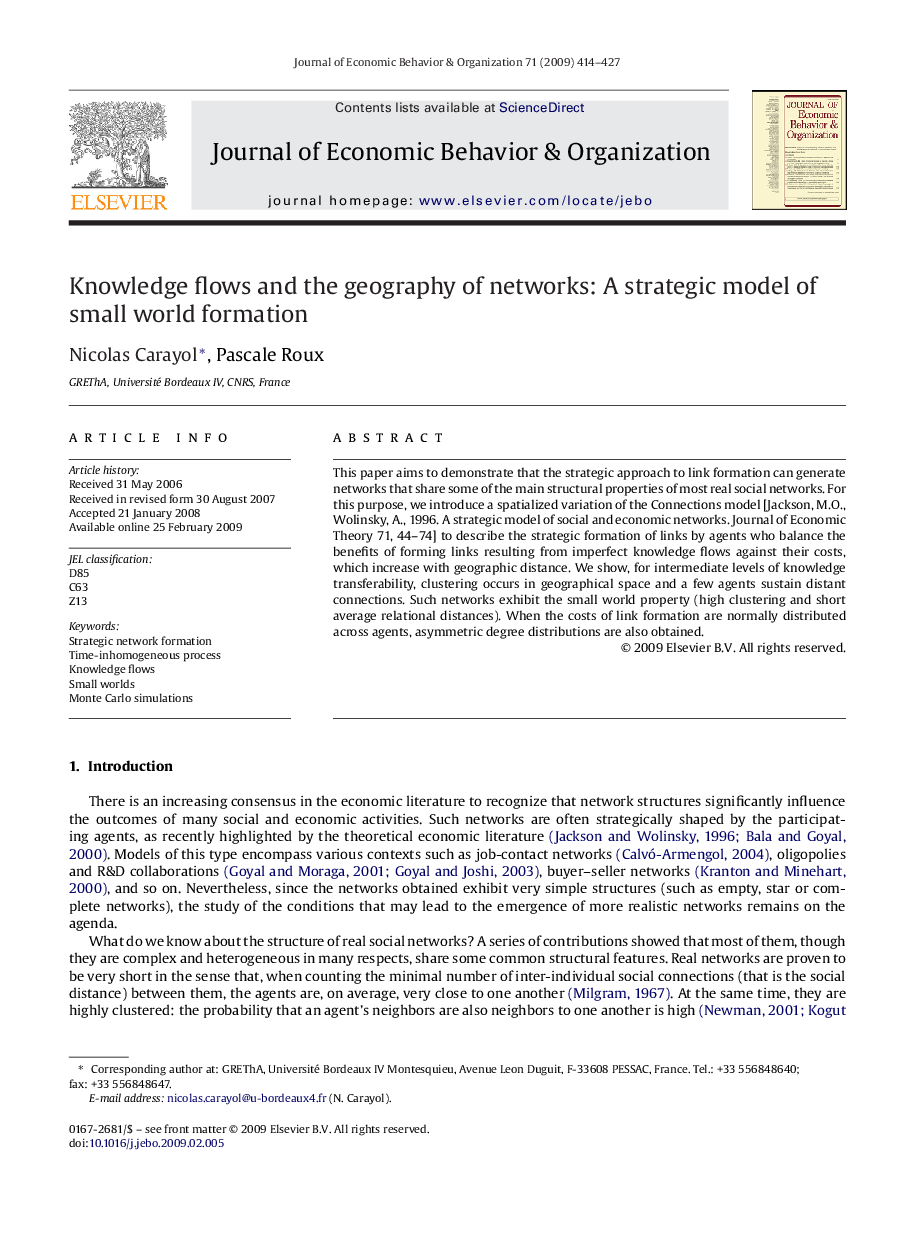| Article ID | Journal | Published Year | Pages | File Type |
|---|---|---|---|---|
| 884270 | Journal of Economic Behavior & Organization | 2009 | 14 Pages |
This paper aims to demonstrate that the strategic approach to link formation can generate networks that share some of the main structural properties of most real social networks. For this purpose, we introduce a spatialized variation of the Connections model [Jackson, M.O., Wolinsky, A., 1996. A strategic model of social and economic networks. Journal of Economic Theory 71, 44–74] to describe the strategic formation of links by agents who balance the benefits of forming links resulting from imperfect knowledge flows against their costs, which increase with geographic distance. We show, for intermediate levels of knowledge transferability, clustering occurs in geographical space and a few agents sustain distant connections. Such networks exhibit the small world property (high clustering and short average relational distances). When the costs of link formation are normally distributed across agents, asymmetric degree distributions are also obtained.
